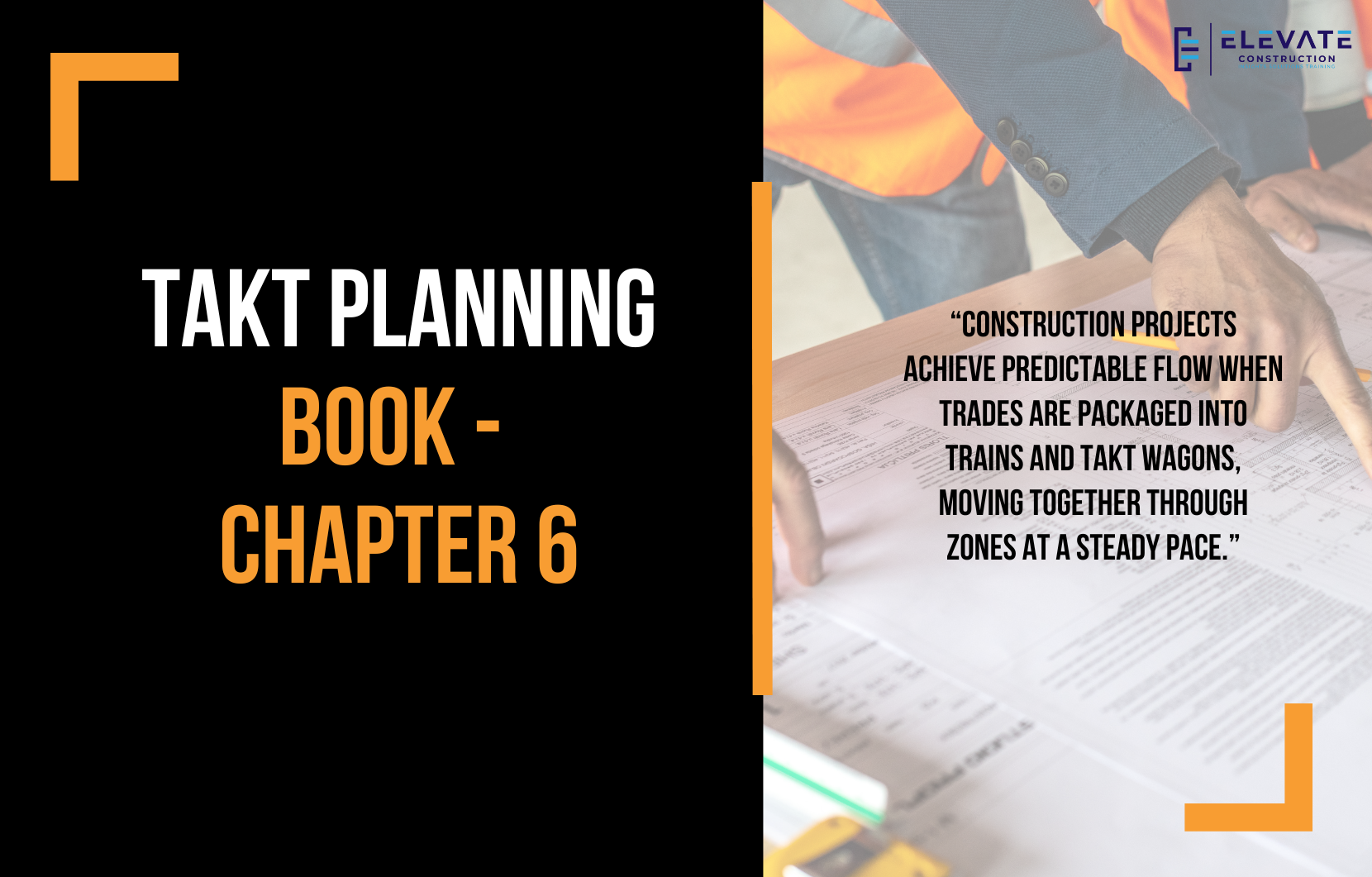Trains and Trade Flow in Construction
In this blog, we’re diving into the concept of Trains and Trade Flow within the Takt Production System. This framework helps construction projects achieve flow, predictability, and balance by organizing crews and work packages into coordinated systems just like a train.
Why Trains Matter
Workers, crews, and work packages can only flow when they are organized to:
- Move in the same direction.
- Follow the same sequence.
- Carry roughly the same amount of work in each Takt wagon.
- Travel at the same speed and distance apart.
Organizing trades as a train is crucial to flow. In manufacturing, cars flow down a production line at the rhythm of Takt time. Construction is similar only in reverse. Instead of products flowing through fixed stations, trades flow through zones.
Takt First, Pull Second
Pull planning is valuable, but it is secondary to Takt time.
- Pull ensures work is only released when needed, reducing waste.
- Takt provides the rhythm and target for the supply chain.
Without Takt as the driver, supply chains with long durations would fail to deliver resources on time. Lean construction works on Takt first, pull second.
Flow in Construction
In manufacturing, the car is the value-receiving flow unit. In construction, the trades are the flow unit. The key is to get trades moving like cars on a line through phases, at a steady pace, and spaced apart correctly.
Every project has:
- Phases: broken down into zones.
- Zones: forming the “tracks” of the train.
- Trades: forming the train cars (Takt wagons).
When zones are leveled and trades are organized into wagons, projects achieve true flow.
Building the Train
Trades don’t naturally move at the same speed. Some activities are faster, others slower. This is where work packaging comes in. To create flow, you can:
- Combine activities into one wagon.
- Split activities into multiple wagons.
- Adjust crew size or resources to speed up or slow down work.
Each wagon must fit within the limits of Takt time and zone size. Buffers of 5%–20% are recommended too much buffer wastes time, too little causes chaos.
When packaged correctly, the Takt plan visually represents wagons moving through zones across time.
Macro vs Norm Level Planning
At the macro level, you estimate durations using builder experience, trade input, and historical data. At the norm level, you refine through pull planning with last planners (foremen). This collaborative process ensures accuracy, improves problem solving, and secures team buy in.
Multi Train Takt Plans
Not all projects work with a single train. Many phases require multiple trains of trades moving at different Takt times. The keys to managing multiple trains are:
- Use the fewest trains possible.
- Magnetize adjacent activities to the largest train.
- Keep trains close together.
- Map intersections and resolve conflicts early.
This flexibility allows construction teams to optimize flow while controlling work in progress (WIP) and maintaining productivity.
Putting It Into Practice
To package trades into flow
- Build sequences with balanced work and trade flow.
- Ensure buffers are included.
- Enter the sequence into a Takt template and format it for clarity.
And remember “a project can only move as fast as its slowest trade, wagon, or package”.
Key Takeaway
Construction projects achieve predictable flow when trades are packaged into trains and Takt wagons, moving together through zones at a steady pace. By focusing on Takt first, pull second, and flexibly managing multiple trains, teams can eliminate chaos, optimize resources, and deliver projects faster and more reliably.
If you want to learn more we have:
-Takt Virtual Training: (Click here)
-Check out our Youtube channel for more info: (Click here)
-Listen to the Elevate Construction podcast: (Click here)
-Check out our training programs and certifications: (Click here)
-The Takt Book: (Click here)
Discover Jason’s Expertise:
Meet Jason Schroeder, the driving force behind Elevate Construction IST. As the company’s owner and principal consultant, he’s dedicated to taking construction to new heights. With a wealth of industry experience, he’s crafted the Field Engineer Boot Camp and Superintendent Boot Camp – intensive training programs engineered to cultivate top-tier leaders capable of steering their teams towards success. Jason’s vision? To expand his training initiatives across the nation, empowering construction firms to soar to unprecedented levels of excellence.
On we go

